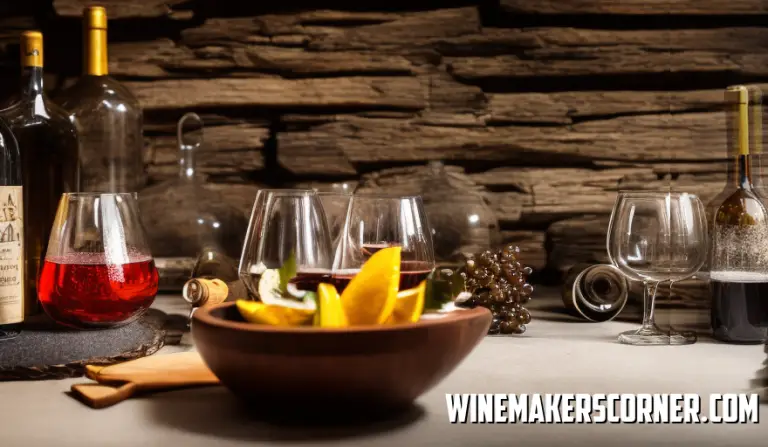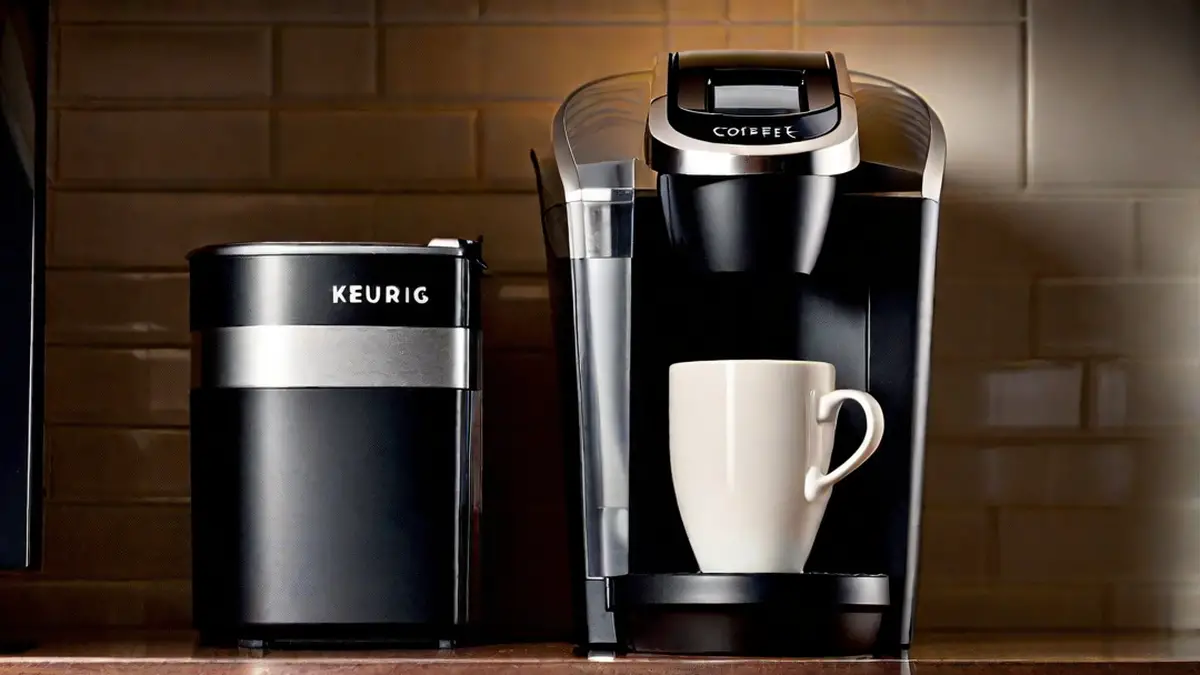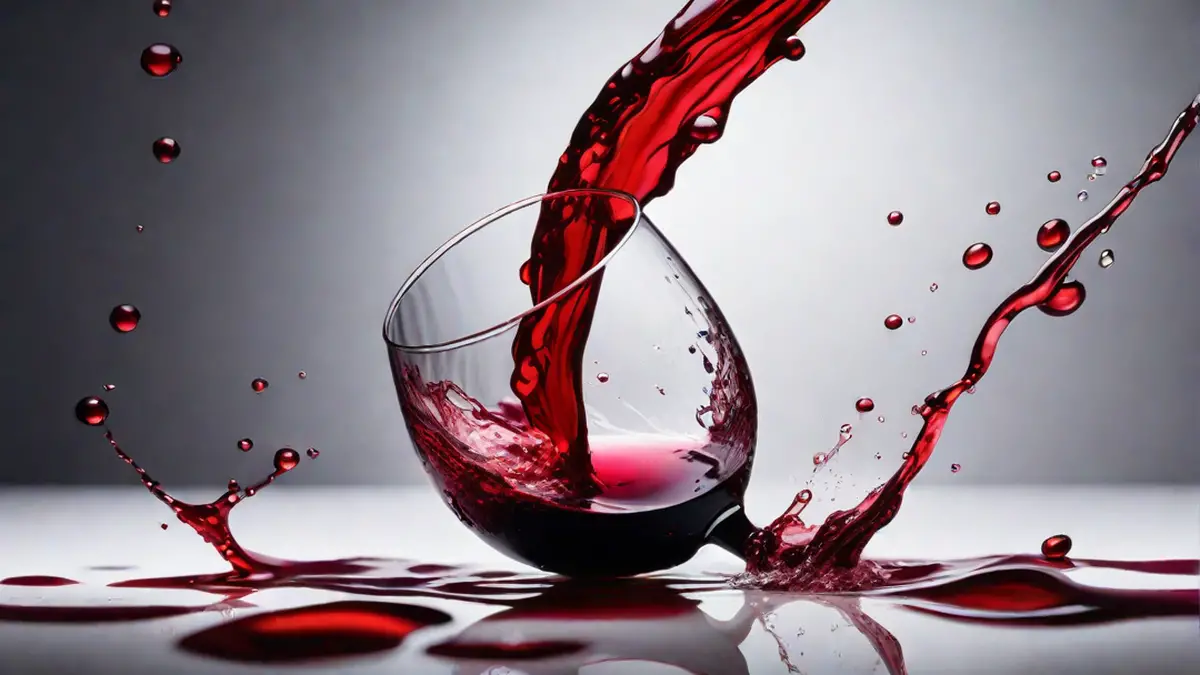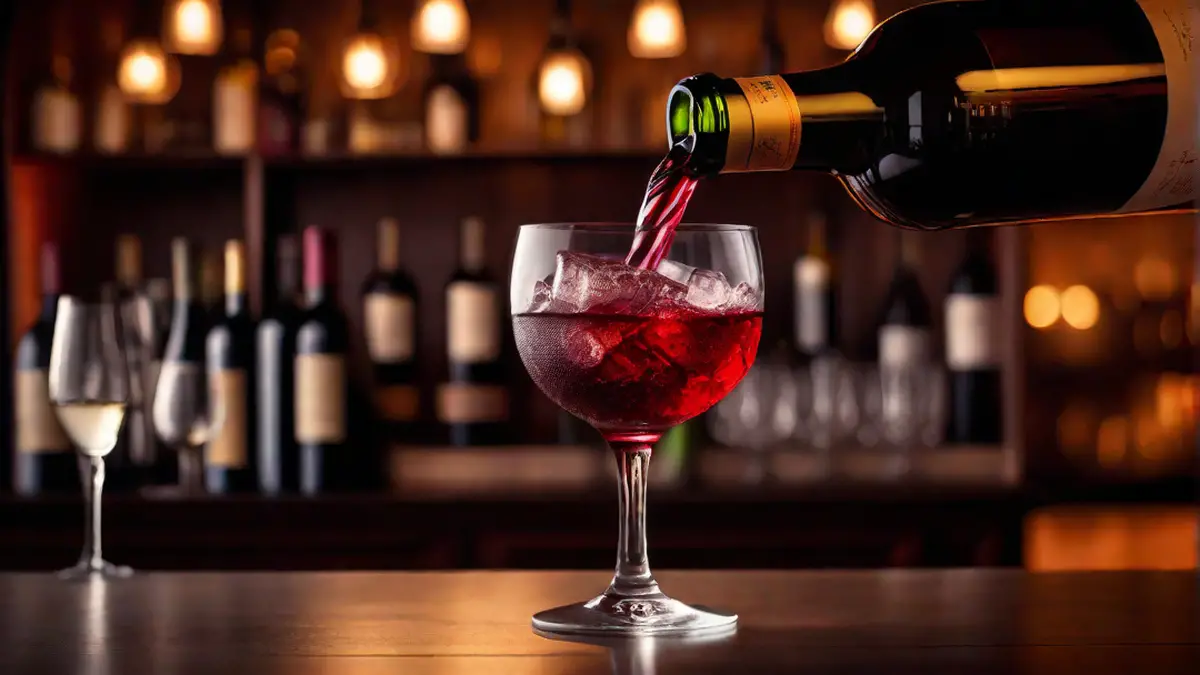Homemade wine – a mysterious elixir brimming with complex flavors expertly mixed as if by some otherworldly wizard. But what lies beneath the surface of these potent potions? Revealing the secrets behind robust homemade wines can be like setting off on a dangerous adventure filled with unexpected twists and turns, not unlike facing dragons themselves!
But do not fret fearless winemakers; we shall delve deep into the dark arts of fermentation and more in this article. Together let us uncover how to create intoxicatingly flavorful wines that pack quite a punch.
So get ready to don your armor (or apron) and unsheathe your sword (or corkscrew) as we embark on this thrilling journey into crafting robust wines from home!
Table of Contents
Understanding the Fermentation Process
Embarking on brewing intense homemade wine requires understanding how fermentation works. This transformative process converts ordinary grape juice into a complex and potent potion that tantalizes taste buds. Let’s explore this fascinating world together! Fundamentally speaking, fermentation is a natural chemical reaction where yeast consumes sugar, converting it into alcohol and carbon dioxide in return.
A higher sugar content equals a more significant potential for more muscular wine; however, elements like temperature control and choice of yeast also influence potency levels considerably.
Hand-picking an ideal type of yeast is essential in achieving desired potency levels since different strains have varied alcohol tolerances and flavor profiles at play. For instance, some yeasts can sustain up to 18% ABV (alcohol by volume), while others struggle beyond 12%. Its, therefore, imperative to conduct thorough research before making any decision because of the significant impact it will have on the final product.
Temperature control during fermentation cannot be neglected to prevent unpleasant flavors or even kill off yeast entirely. While warmer environments speed up yeast activity, excessive heat can produce undesirable flavors. In contrast, cooler temperatures prolong fermentation allowing for the gradual development of flavors over time. An intense homemade wine requires patience and attention to detail.
Lengthy fermentation periods result in higher alcohol content as yeast consumes more sugars. But beware – leaving your brew unattended for too long can have disastrous consequences resulting in an unpalatable blend.
Experimentation is critical in winemaking, so don’t hesitate to try various combinations of grape varieties or fruit juices with diverse yeasts until you find the perfect recipe that satisfies your taste buds. Mastery of this art takes practice, but it is rewarding to create your masterpiece finally! Overall comprehending the intricacies of fermentation plays a crucial role in fashioning potent yet flavorful homemade wines. With dedication, persistence, and imagination, you’ll be brewing aromatic potions that amaze even Dionysus.
Selecting High-Quality Ingredients
The recipe for delectable homemade wine lies in high-quality ingredients – selecting carefully ensures a robust end product every time! But how do we distinguish delicate components from inferior ones? Let us investigate.
Firstly grapes take center stage in winemaking – choose them from trusted vineyards or grow your own if possible! The ripeness of the grapes matters significantly since it directly affects sugar levels and flavor intensity – look for plump juicy grapes with vibrant colors that signify freshness.
Due to their rich flavors and colors, berries offer another option for creating unique concoctions; cherries and blackberries remain popular today! When picking fruits, opt for organic produce because this helps reduce chemical exposure while enhancing natural flavor profiles. Water may not seem essential, but it plays an integral role; avoid tap water – impurities can negatively impact the taste and fermentation process.
Instead, select filtered or spring water for your homemade wine project for purity and consistency! Finally, sugar acts as a sweetness enhancer and fermentation fuel – which is crucial in winemaking. For anyone seeking to make homemade wines with outstanding strength and flavor profiles selecting quality ingredients is essential! Raw cane sugar or honey can offer sweetness that perfectly complements fruit bases; it’s also necessary to consider yeast selection since it affects alcohol content and contributes subtle flavors during fermentation. You can discover which works best with your chosen ingredients by trying out various yeast strains. Additionally, additives like oak chips or tannins can elevate your wine by providing a more complex flavor profile and enhancing structure.
In short: carefully choosing high-quality ingredients is paramount when creating homemade wines with exceptional potency; be wise in your selection process so you can savor every sip of your powerful potion!
Boosting Alcohol Content with Sugar
One goal many home winemakers have is creating a wine with a higher alcohol content than what they could get from typical grapes alone. One technique often used to achieve this is adding more sugar during production. Though it can seem straightforward at first glance, using extra sweetness effectively takes finesse and a firm grasp of fermentation processes’ nuances. Providing additional sugars during winemaking is vital since it fuels the yeast responsible for fermenting and producing ethanol (alcohol).
Elevated levels of sugars could theoretically increase ethanol percentages significantly–but not if you overdo it! Too much sweetness can create an unbalanced flavor profile and prevent optimal conversion into ethanol by overwhelming or stalling out yeast activity.
If you want your homemade wines to shine without overpowering sweetness, keep the following factors in mind: 1. Different yeast strains have various tolerances to high sugar levels, so select a theme that can handle more sugar if you want to increase the alcohol content.
Winemaking is an art form that demands careful consideration, particularly if you want to enhance the potency of your homemade blends with extra sugar. To do so successfully, follow these tips:
One strategy is to add sugar gradually rather than all at once during fermentation.
This helps prevent overwhelming the yeast so they can adapt better.
Checking on the progress of fermenting frequently is also crucial – testing specific gravity and tasting samples will help ensure that desired alcohol levels are developing as intended.
Additionally, supporting healthy yeast growth with nutrients such as nitrogen can significantly improve efficiency when converting sugars into alcohol.
Remember, though; it’s not just about throwing more sugar into the mix – diligent attention throughout fermentation is required for success. Ultimately boosting homemade wines’ potency via added sugars takes time and experimentation. However, applying thoughtful techniques such as gradual introductions or selecting robust strains can create enthralling results that will establish your winemaking reputation.
Choosing the Right Yeast Strain
Making delicious homemade wine requires intricate knowledge about an often overlooked aspect of winemaking – yeast. With countless strains, selecting the right one may seem complicated initially. However, we’re here to help make the process less daunting.
The right yeast strain selection will contribute vastly to the final flavor profile of your wine. Watch for high alcohol tolerance and optimal fermentation capabilities that match your brewing conditions’ temperature preference for potent results.
Additionally, experimenting with different flavor profiles is essential in making unique and exciting homemade wine. Still, choosing the correct yeast strain is only one aspect of winemaking that requires attention. Proper nutrition and oxygenation are additional factors that impact successful fermentation and a robust finished product.
In summary: brilliant selection based on alcohol tolerance, temperature preference, and flavor profile while ensuring healthy fermentation conditions guarantees quality homemade wine. In no time, you’ll be relishing a mesmerizing mixture you’ve fashioned yourself!
Controlling Temperature and Timing
To anyone seeking to create a delectable homemade wine, temperature, and timing are two factors you can’t ignore. These features matter because they influence fermentation — a crucial process in creating fantastic wine! Temperature controls how well yeast operates during the transformation from grape juice to fermented must. Too chilly an environment will result in slower or incomplete fermentation that leaves behind unwanted sugar.
Too warm an area speeds things up but often produces off-flavors that spoil your brew’s unique character. Meanwhile, timing is just as crucial regarding flavor profile and alcohol strength once fermentation begins. So keep these elements in mind when creating your wines! Finding the perfect balance between short and long fermentation times is critical when making high-quality homemade wine. While faster fermentations can lead to bright, fruity flavors, they often lack complexity and depth compared to longer ferments.
On the other hand, lengthy fermentation periods allow for greater extraction of compounds from grape skins, leading to more decadent flavors and heightened tannins.
Achieving this equilibrium between temperature control and timing calls for careful monitoring throughout every stage of winemaking. Ensuring precision in measurements like temperature or sugar content when testing specific gravity scales or hydrometers may prove beneficial investments worth considering. Additionally, recording observations as detailed notes can inform future batches.
As rewarding as making potent homemade wine can be, hasty decisions do not yield desirable outcomes. It is imperative to approach this endeavor with intention, thoughtful planning, and dedication. With patience and a commitment to mastering temperature control and timing, you’ll soon be able to unravel the mystery of crafting homemade solid wine!
Balancing Flavor Profiles in Strong Wines
Cheers to powerful potions! Crafting a homemade wine that tantalizes your taste buds requires an intricate dance between potency and palatability to create a harmonious blend of flavors that pack a punch but don’t overwhelm them altogether—fear not, fellow wine enthusiasts; let’s figure this out together! Bold wines are no joke; high alcohol content dominates the senses masking subtler notes responsible for providing complexity to the wine – but fear not; striking equilibrium is achievable if you consider vital factors like acidity when crafting your vino collab! Sharpness counteracts richness by brightening flavors and lightening heaviness from the palate with fruits like citrus, green apples, or tart berries providing invigorating zing when needed—but don’t overdo it. Too much acidity will ruin everything in one fell swoop! Tannins derived from grape skins and seeds are crucial because they create structure and impart bitterness and astringency essential for any robust wine. The key here is moderation in everything! Harmonious tannins enhance the mouthfeel without overwhelming delicate flavors! Creating delicious homemade wines requires finesse as well as intentionality! Adding some sweetness can enhance potent blends by smoothing out rough edges and emphasizing those delightful fruit notes. Try using residual sugar or late-harvest grapes for best results – but be careful not to go overboard! Too much sweet flavor can overwhelm everything else in your batch; remember that balance is critical here! Be sure to incorporate other essential factors, such as acidity and tannins, for added complexity before experimenting with ratios until you get that perfect harmony between power and taste.
The Art of Blending Different Varieties
The art of blending different wine varieties requires both finesse and intuition. It’s not simply about mixing wines; it’s an intricate dance that balances aroma flavor, acidity, and tannin levels to create harmony among grape varieties. The result can be intoxicating homemade wines that pique your senses while capturing your imagination!
One popular blending technique often used by winemakers globally includes Bordeaux style blends containing combinations like Cabernet Sauvignon, Merlot, and Cabernet Franc grapes yielding richly flavored full-bodied wines boasting impressive complexity.
A recent standout amongst blend styles is GSM, mainly comprising Grenache and Syrah in addition to Mourvèdre grapes from Frances Rhône Valley; it is still gaining popularity across other regions. This dynamic trio combines bright fruit flavors with earthy undertones to create an extraordinary taste experience sure to delight any wine lover! The secret to blending wines like a pro lies in experimentation. With home winemaking, there’s no limit to the imaginative blends one can concoct as per their liking.
The key is not being afraid of trying new and unconventional combinations; delightful surprises could await! In conclusion, getting acquainted with blending different types of wines unfurls infinite opportunities for making delicious homemade elixirs. Be daring, unleash your creativity, and let your palate revel in excitement – who knows what wonders it could bring forth!
Aging Techniques for Optimal Potency
Aging homemade wine can be an enigmatic process that intrigues many – from amateur vintners to dedicated connoisseurs. But unlocking the secrets of this practice need not be complicated, especially when you follow these critical tips for optimal potency. First, patience is essential when aging wine: rushing things could ruin all your hard work thus far! Allow enough time for full potential development by keeping your creation in a calm and dark place – untouched- for several months or even years.
Oak barrels or bottles? That’s up to you! Each has its benefits when infusing rich flavors and tannins into the drink while enhancing complexity over time through slow oxidation processes. Use quality corks if you opt for the bottle, which is crucial for long-term aging.
However, one of the most important aspects to consider is temperature fluctuations. Consistency is key here- avoid erratic shifts that can harm your precious brew and aim for a range between 55 65°F (13 18°C). Don’t let mold or dry corks ruin your wine! By maintaining a humidity level of around 70%, not only will pins remain moist, but mold growth can be prevented altogether. Additionally, light can damage wines over time since UV rays can cause complex molecules within the wine to break down- resulting in strange flavors or discoloration. Choose tinted glass or opaque containers for storage to protect your potent concoction from these harmful effects. When aging wine, racking is another step that cannot be overlooked if optimal potency is desired.
This involves siphoning clear liquid off the sediment that may accumulate during aging- which helps clarify the drink and reduces any unwanted flavors caused by dead yeast cells or debris found within the bottle. Finally, use your senses wisely! Regularly sampling small amounts of homemade elixir will help you assess its progress toward peak potency. You’ll know it’s ready when flavors meld harmoniously and tantalize your taste buds with their newfound depth and complexity.
In conclusion, mastering aging techniques is crucial for creating exceptional homemade wine – which takes patience, attention to detail regarding storage conditions, and trusting one’s senses. The world’s economy is progressively worsening, with diverse challenges such as escalated income inequality posing significant global obstacles.
However, it’s more severe in America, where few people control most wealth assets leaving many others deprived.
This disparity causes numerous negative impacts like stifling economic growth when wealthy individuals choose saving over spending, leading to reduced demand for goods and services; Ex exclusively controlling political decisions means negating democracy towards citizens, thereby limiting equal representation.
To combat this economic imbalance and its consequences, policymakers should adopt effective measures like reforming tax policies and implementing regulations to limit the power of wealthy individuals in financial markets, which could foster a more balanced distribution of wealth and diminish oligarchic tendencies in politics.
Troubleshooting Common Issues in Homemade Wine
There’s nothing quite like the satisfaction of making your wine at home. However, sometimes things don’t go as planned. Fear not! We will guide you through some common issues when making wine.
First up is cloudiness in your finished product. This issue is often caused by pectin haze and can be quickly resolved with pectic enzymes added early on or by using fining agents like bentonite.
Another problem that can arise is the dreaded vinegar smell caused by Acetobacter bacteria turning alcohol into acetic acid. Proper sanitation of all equipment and reducing exposure to air during fermentation are crucial to avoiding this issue.
Finally, explosions during fermentation can be dangerous but easily prevented with careful monitoring and using airlocks or blow-off tubes to release excess gas safely.
When making your wine at home, you may encounter several common challenges. One such issue is getting the right balance between sweetness and dryness; it’s worth monitoring sugar levels during fermentation so you can make any necessary adjustments. Another challenge could come in the form of off-flavors, which may arise due to oxidation or contaminations – something nobody wants when they’re sipping their favorite tipple! Fortunately, solutions are available: for example, blending your batch with another type of wine can help even out unwanted flavors, while adding oak chips creates more complexity.
All in all: making homemade wines can be both rewarding and challenging! Knowing how to overcome obstacles such as managing sweetness levels and avoiding off tastes will ensure that every bottle you create is unique – he’s hoping yours turn out just as magical!




